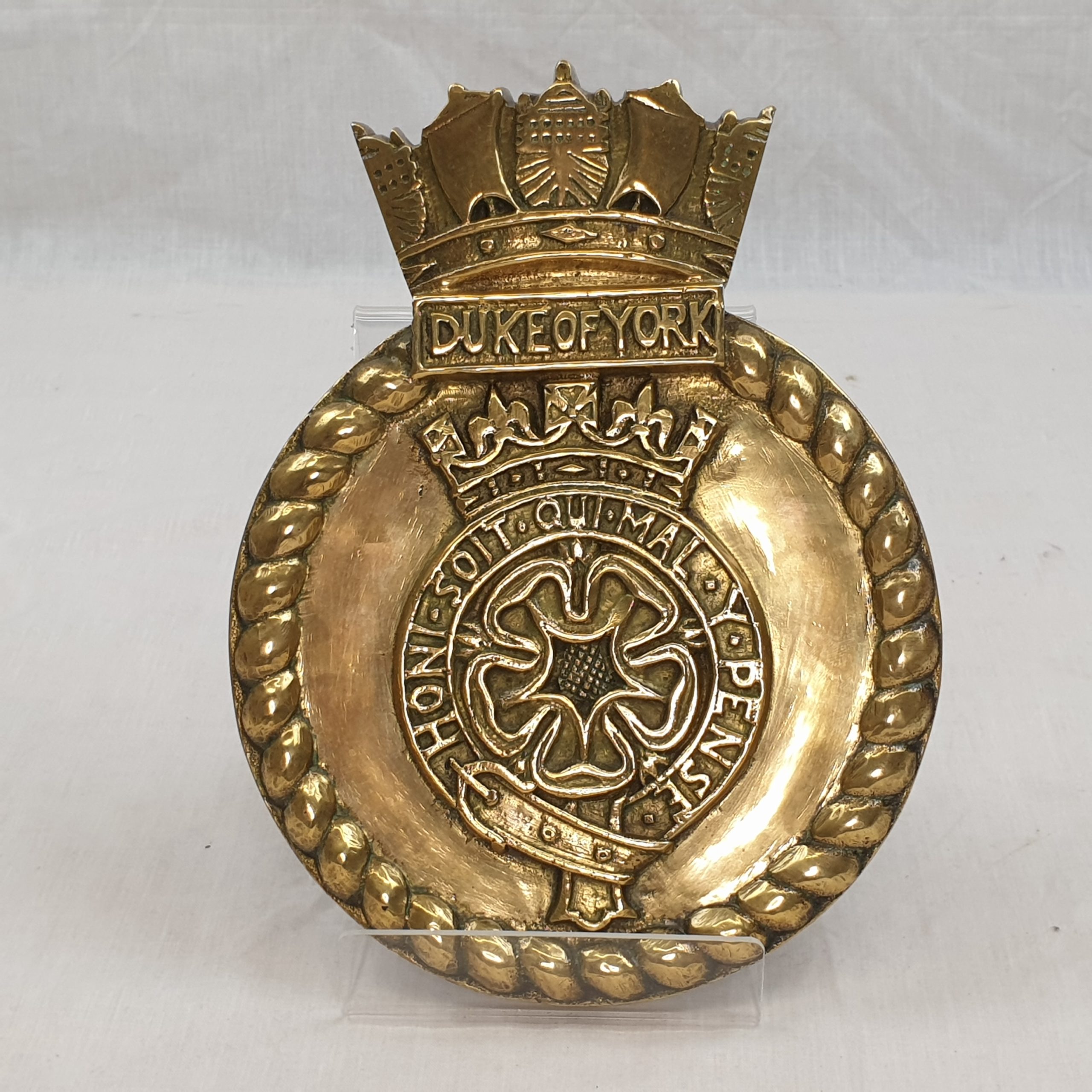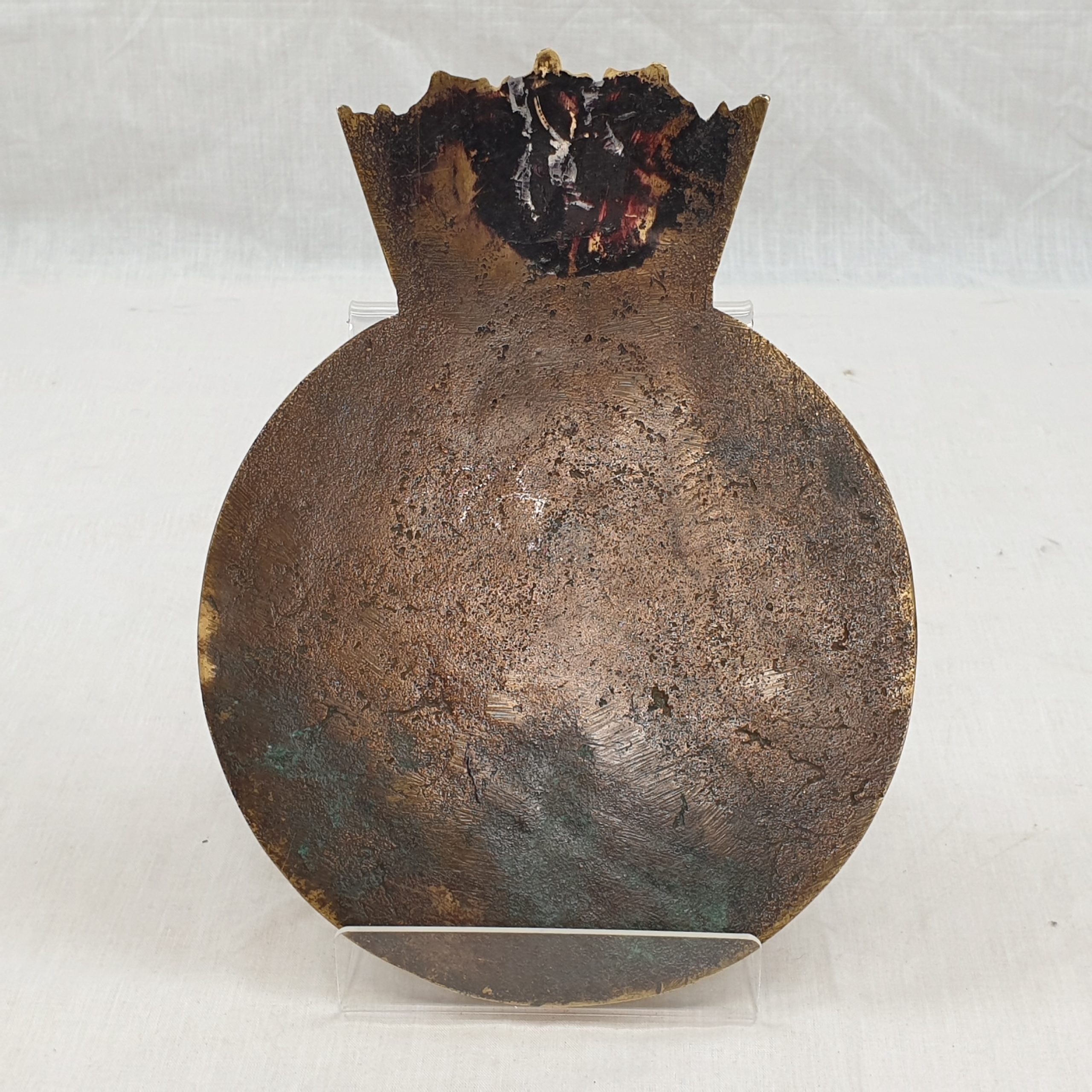~ HMS Duke of York Battleship Main Battery Bronze Tompion ~
The tompion, originally fitted to the end of the barrel of one of the quick fire 4.25 inch main battery gun muzzles, has the ships name in relief above a trident with a chevron placed over it. The tompion has a twisted rope border and is secured to a wooden board by two screws.
HMS Duke of York was a King George V-class battleship of the Royal Navy, commissioned during World War II. Here’s a detailed overview of her history:
Design and Construction
Class and Type: HMS Duke of York was a King George V-class battleship. These ships were designed under the constraints of the Washington Naval Treaty, which limited battleship displacement and armament.
Specifications:
Displacement: Approximately 42,000 tons (standard).
Length: 745 feet (227 meters).
Armament: 10 × 14-inch (356 mm) guns, 16 × 5.25-inch (133 mm) dual-purpose guns, and numerous smaller anti-aircraft weapons.
Armor: Belt armor up to 14.7 inches thick, with significant deck and turret armor.
Construction: Laid down on 5 May 1937 at John Brown & Company shipyard in Clydebank, Scotland. She was launched on 28 February 1940 and commissioned on 4 November 1941.
Service History
Early Service: Initially, HMS Duke of York was involved in convoy escort duties in the Atlantic, providing vital protection for merchant ships against German U-boats and surface raiders.
Battle of the North Cape:
Date: 26 December 1943.
Significance: HMS Duke of York played a crucial role in the sinking of the German battleship Scharnhorst. She, along with her escorts, intercepted Scharnhorst during an attempt by the German ship to attack Arctic convoys. Duke of York’s fire crippled Scharnhorst, leading to her eventual sinking by torpedoes from British destroyers.
Outcome: The battle demonstrated the effectiveness of British naval radar and marked a significant victory for the Royal Navy, eliminating a major threat to Allied Arctic convoys.
Later Service:
Home Fleet Operations: Continued to serve with the Home Fleet, participating in various operations including the protection of Arctic convoys to the Soviet Union.
Pacific Theater: Transferred to the Pacific in 1945, where she was part of the British Pacific Fleet. She was present in Tokyo Bay during the Japanese surrender in September 1945.
Post-War and Decommissioning
Post-War Role: After the war, HMS Duke of York served in a variety of peacetime roles, including as a training ship and in diplomatic visits.
Decommissioning: She was decommissioned and placed in reserve in 1949. With the advent of new naval technologies and the shift towards aircraft carriers, battleships like HMS Duke of York were rendered obsolete.
Fate: Stricken from the naval register in 1957, she was eventually sold for scrap and broken up in 1958.
~ Condition ~
The tompion is in excellent condition.
~ Dimensions ~
The tompion is 17 cm (6.75 inches) in diameter and 2 cm (0.75 inches) deep.
It weighs 2.6 Kg.
#10377



